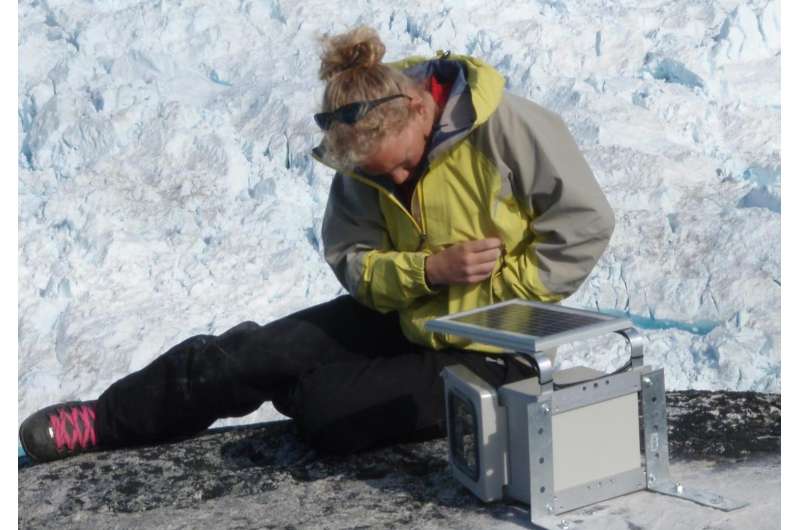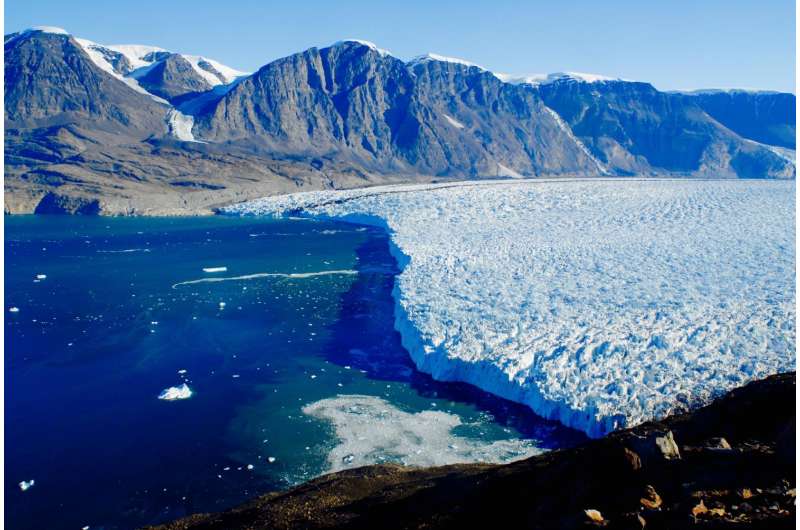Ice loss accelerating in Greenland's coastal glaciers, study finds

Surface meltwater draining through and underneath Greenland's tidewater glaciers is accelerating their loss of ice mass, according to a Dartmouth study that sheds light on the relationship between meltwater and subglacial discharge.
The findings appear in the journal Annals of Glaciology.
Greenland has the potential to contribute six to seven meters of global sea level rise predominantly through ice mass lost out of large tidewater glaciers. The study's findings will be used in modeling how water influences glacier melt, glacier flow and glacier stability and to predict global sea level rise for Intergovernmental Panel on Climate Change reports.
"Our results show meltwater from these glaciers is playing a larger role in glacier stability than previously thought," says lead author Kristin Schild, a doctoral student in Dartmouth's Department of Earth Sciences. "A clearer understanding of subglacial hydrology at tidewater outlet glaciers is important for understanding the mechanisms controlling fluctuations in ice flow and submarine melt as well as gauging the impact of rapid freshwater delivery to the fjord system."
Media reports about glacial melting are common, but less attention has been paid to how glaciers are losing mass. Surface meltwater can exploit weaknesses in glaciers, fracturing and weakening the ice as it drains to the bottom. Water under glaciers decreases the friction between the ice and rock, causing the glaciers to move faster. When fresh meltwater exits the glacier into the ocean, it brings warm saltwater to the glacier terminus, which causes melting of the glacier from below (submarine melting). Once this freshwater hits the surface of the ocean, it helps disintegrate the mélange (recently calved icebergs and sea ice) that stabilizes the glacier terminus. Tidewater outlet glaciers discharge most of the Greenland Ice Sheet's mass through iceberg calving, submarine melting and meltwater runoff. While calving can be observed in person and with remote sensing observations, it is difficult to assess melting within and below glaciers and how the meltwater is discharged.

The Dartmouth team studied a fast-flowing West Greenland tidewater glacier, using time-lapse photography, modeled runoff estimates and ground and satellite imagery to determine how much of the glacier is experiencing melt and when meltwater exits the glacier and enters the fjord. The timing between melt onset and when the meltwater emerges shows how the meltwater travels through and below the glacier.
Their results show that multiple intense plumes of sediment-rich meltwater can occur across a glacier's terminus, which hasn't been documented previously, and can increase calving and melting; sediment plumes can break apart the mélange, which weakens the stability of the glacier terminus; and meltwater is being stored under the glacier, which can speed up the glacier's velocity.
More information: Subglacial hydrology at Rink Isbræ, West Greenland inferred from sediment plume appearance, DOI: 10.1017/aog.2016.1
Provided by Dartmouth College




















